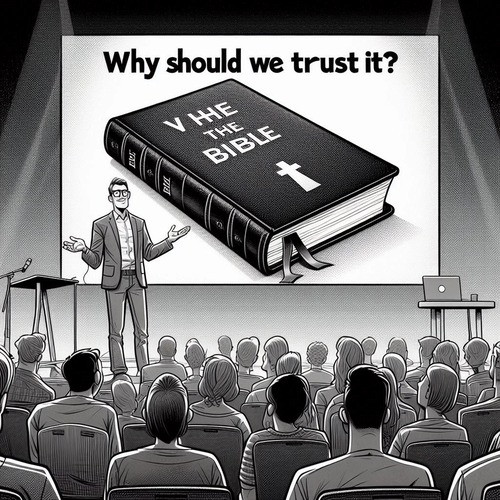The New Perspective on Paul: Piper and Grudem Respond
The landscape of Pauline scholarship underwent a seismic shift with the emergence of what has come to be known as the “New Perspective on Paul” (NPP). Among its most prominent advocates, NT Wright has articulated a fresh perspective on Paul’s writings that has generated both enthusiasm and criticism. Representing the traditional Reformed perspective in this discussion, we present the responses of John Piper and Wayne Grudem. This analysis explores each of their views…
TRADITIONAL PROTESTANT INTERPRETATION AND THE NEW PERSPECTIVE
For centuries, Protestant theology has understood Paul primarily through the lens of Martin Luther’s experience and interpretation. This reading emphasised individual salvation, viewing first-century Judaism as a legalistic religion where people sought to earn their salvation through works. The New Perspective challenges these fundamental assumptions, suggesting we may have misunderstood both Paul and the Judaism he engaged with.
NT WRIGHT’S NEW PERSPECTIVE ON PAUL
Wright’s reframing of Pauline theology begins with a crucial observation: Second Temple Judaism wasn’t a religion of works-righteousness as traditionally portrayed. Instead, Wright argues, it was fundamentally a religion of grace where observance of the Torah was understood to be the appropriate response to God’s covenant faithfulness, rather than the means to earn salvation.
Wright contends Paul’s primary concern wasn‘t how individuals get saved but rather the question of how God is fulfilling His covenant promises through Christ. This leads to several key reformulations:
- Understanding “Works of the Law”: According to Wright, when Paul speaks of “works of the law,” he isn’t primarily addressing individual attempts to earn salvation. Instead, he’s discussing the Jewish boundary markers (such as circumcision, dietary laws, and Sabbath observance) that distinguished Jews from Gentiles. Paul’s concern was how these markers related to the new covenant community in Christ.
- Righteousness as Covenant Faithfulness: Wright argues righteousness in Paul’s writings often refers to God’s covenant faithfulness rather than a moral quality that is transferred from Christ to believers. This understanding reshapes how we read key passages about “the righteousness of God” and justification.
- Justification Redefined: In Wright’s view, justification is primarily about God declaring who His covenant people are. While it does have individual implications, its focus is corporate—declaring who is part of God’s family. This declaration is made in the present based on faith and will be confirmed in the future based on the whole life lived.
JOHN PIPER’S RESPONSE
Piper, representing a more traditional Reformed perspective, has raised significant concerns about Wright’s interpretations. His critique centres on several key issues:
- Defence of Imputed Righteousness: Piper argues that Wright’s rejection of imputed righteousness undermines a crucial aspect of salvation. For Piper, the doctrine that Christ’s perfect righteousness is credited to believers is essential to understanding how God can declare sinners righteous.
- God’s Righteousness: Where Wright sees God’s righteousness primarily in terms of covenant faithfulness, Piper maintains it refers to God’s moral perfection and His commitment to uphold His glory. This difference affects how they understand salvation and justification.
- The Role of Works: While both scholars affirm works don’t earn salvation, they differ on how works relate to final judgement. Piper worries that Wright’s emphasis on the role of works in final justification could undermine the doctrine of salvation by faith alone.
WAYNE GRUDEM’S CRITIQUE OF WRIGHT AND NPP
Wayne Grudem, author of Systematic Theology: An Introduction to Biblical Doctrine, has offered significant critiques of NT Wright and the NPP. His concerns, while overlapping with Piper’s in some areas, bring distinct considerations from systematic theology to the debate.
- Redefinition of Key Terms: Grudem argues Wright fundamentally redefines crucial theological terms that have been well understood throughout church history. He particularly objects to Wright’s redefinition of “righteousness,” “justification,” and “gospel,” seeing these new definitions as not only linguistically unwarranted but also potentially harmful to orthodox understanding. For instance, Wright defines righteousness primarily as “covenant faithfulness” rather than as the moral perfection required by God’s law.
- Loss of Personal Salvation Focus: In Grudem’s analysis, Wright’s emphasis on corporate and covenant aspects of salvation, while not wrong in itself, threatens to overshadow the vital personal aspect of salvation. He contends that the New Testament clearly presents salvation as both personal and corporate, and that Wright’s perspective risks diminishing the crucial individual dimension of faith and justification.
- Challenge to Imputation: Grudem sees Wright’s rejection of the traditional doctrine of imputation as particularly problematic. He argues that Wright’s alternative explanation fails to adequately account for how believers can stand righteous before a holy God, and that this undermines a crucial pillar of Reformed soteriology.
POINTS OF AGREEMENT
Despite their differences, Wright shares significant common ground with Grudem and Piper:
- Both emphasise Christ’s centrality in God’s plan of salvation
- Both reject any form of works-righteousness
- Both stress the importance of faithful biblical interpretation
- Both seek to understand Paul in his historical context
IMPLICATIONS FOR CONTEMPORARY CHRISTIANITY
The debate has significant implications for how we understand and practice our faith today:
Theological Impact: The discussion challenges us to think more deeply about the relationship between individual and corporate aspects of salvation, the nature of justification, and the role of works in the Christian life. It also raises important questions about how we read Scripture and understand its historical context.
Practical Applications: The debate has practical implications for Christian unity, ecumenical dialogue, and mission. Wright’s emphasis on the corporate nature of salvation and the inclusion of Gentiles in God’s people can enrich our understanding of church unity and mission. Piper’s and Grudem’s focus on individual salvation and the importance of right standing with God reminds us of the personal nature of faith.
THE NEW PERSPECTIVE ON PAUL: CONCLUSION
Wright’s differences with Piper and Grudem represent more than an academic disagreement. It touches on fundamental questions about the nature of salvation, the meaning of justification, and the relationship between faith and works. While the debate continues, it has enriched our understanding of Paul’s writings and challenged us to think more deeply about how we read Scripture and apply it to our lives.
Both sides have made valuable contributions to our understanding of Paul’s theology. Wright’s emphasis on historical context and the corporate nature of salvation provides important correctives to individualistic readings of Paul. Piper’s and Grudem’s defence of traditional Reformed emphases reminds us of crucial aspects of Protestant theology that have nourished the church for centuries.
The ongoing dialogue between these perspectives continues to stimulate theological reflection and encourage deeper engagement with Scripture. As we engage with these ideas, we’re challenged to hold our theological convictions with both conviction and humility, recognising we “see through a glass darkly” as we seek to understand and apply God’s truth.
The New Perspective on Paul—Related FAQs
Does Wright’s view undermine the doctrine of penal substitution? Yes, Reformed theologians argue Wright’s reframing of justification and righteousness weakens the biblical doctrine of penal substitution. While Wright affirms Christ’s death for our sins, his emphasis on covenant membership over individual guilt and forgiveness can blur the crucial truth that Christ bore God’s wrath in our place.
- How does Wright’s view affect our understanding of Romans 7? While Wright sees Romans 7 as primarily about Israel’s corporate struggle under the law, the Reformed view maintains Paul is describing the individual believer’s ongoing struggle with sin. This personal interpretation better accounts for the intense first-person language and aligns with Christian experience.
- What are the implications of Wright’s view for assurance of salvation? Wright’s connection of final justification to works potentially undermines the Reformed doctrine of assurance. If final justification depends partly on our works, rather than Christ’s finished work alone, it becomes difficult to have present certainty of salvation.
How does Wright’s interpretation affect our understanding of union with Christ? Reformed critics argue Wright’s focus on covenant membership diminishes the profound personal reality of union with Christ. The traditional Reformed view emphasises both legal and mystical union with Christ as fundamental to salvation.
- What does Wright’s view mean for evangelism? From a Reformed perspective, Wright’s emphasis on covenant membership and future justification could complicate the gospel message in evangelism. The traditional message of immediate justification by faith alone provides a clearer call to conversion.
- How does Wright handle the doctrine of original sin? While Wright affirms human sinfulness, his framework tends to downplay the Reformed emphasis on Adam’s federal headship and imputed sin. This affects how we understand both condemnation in Adam and justification in Christ.
What’s at stake in the debate over “faith alone”? Though Wright affirms salvation by grace, his view of future justification based partly on works appears to modify the Reformed understanding of sola fide. Reformed theologians argue this risks mixing faith and works in justification.
- How does Wright’s view impact our understanding of sanctification? Reformed critics worry Wright’s connection of final justification to works blurs the crucial distinction between justification and sanctification. This could lead to confusion about the role of works in the Christian life.
- What are the implications for church unity? While Wright’s emphasis on corporate identity in Christ could promote ecumenical dialogue, Reformed theologians worry it might come at the cost of crucial doctrinal distinctives, particularly regarding justification.
How does Wright’s view affect our reading of the Old Testament? While Wright helpfully emphasises the continuity between Old and New Testaments, Reformed theologians argue his covenant-focused reading can underemphasise individual faith and the work of Christ prefigured in Old Testament sacrifice.
The New Perspective on Paul—Our Related Posts
Editor's Pick
SUPPORT US:
Feel the Holy Spirit's gentle nudge to partner with us?
Donate Online:
Account Name: TRUTHS TO DIE FOR FOUNDATION
Account Number: 10243565459
Bank IFSC: IDFB0043391
Bank Name: IDFC FIRST BANK






